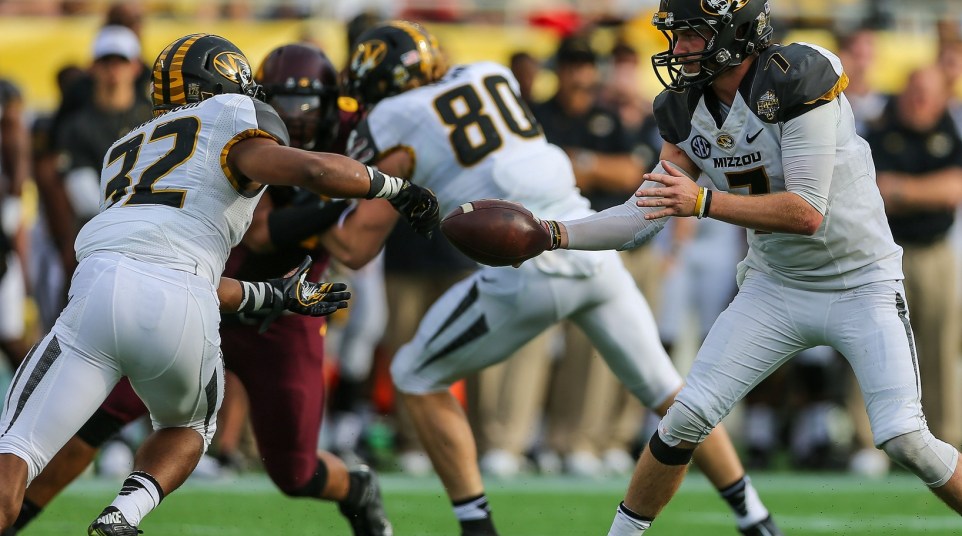Surefire way for Mizzou to keep winning: Feed Russell Hansbrough
Missouri roared to an SEC East title in 2013 with a tough-to-defend passing game.
So great was the team’s receiving talent that Bud Sasser, one of the best receivers in the conference last season, was relegated afterthought status as the fourth option. Mizzou listed its starting receivers as 6-foot-4, 6-foot-5 and 6-foot-6, an impossible combination of height and athleticism even for SEC defensive backs.
That the ’14 Missouri team won another division title by relying on a stout defense and solid running game caught some casual or unfamiliar SEC fans off guard.
In the last two years, Missouri has rushed for the second-most yards in the SEC, behind only Auburn. The Columbia, Mo., Tigers rushed for more yards than Alabama, Arkansas, LSU, Mississippi State and Georgia.
Last year, Henry Josey left for the NFL, Morgan Steward missed the entire season due to a hip injury and Marcus Murphy spent much of fall practice working with the receivers. Yet Mizzou nearly joined Arkansas and Georgia Southern, two teams married to the running game as a core identity, as the only three programs in the country with two 1,000-yard rushers.
Quarterback Maty Mauk didn’t develop in ’14 like the team hoped, and although he’s still got a chance to become a very good SEC passer, the team has lost at least eight significant receivers in the last two years — the top three by yards after the ’13 and ’14 seasons and two additional players who got kicked off the team. The defense, too, is going through a transition with a new coordinator and without plug-and-play All-SEC type guys at defensive end.
Senior center Evan Boehm and senior right guard Connor McGovern make a powerful, linked run-blocking tandem. The Mizzou running game got better last year when McGovern returned to guard — he’d started the season at right tackle until an injury in the fourth game coincided with a lineup shuffle.
It just makes sense for Missouri to pound the ball on the ground often in 2015. Russell Hansbrough, at 5.4 yards per carry for his career, also proved durable last season with about 15 carries per game. He could be a Top 5 back in a conference loaded with stars at the position this fall.
Junior college transfer Chase Abbington should give the team a strong second or third option who excels in space and can catch passes, perhaps filling the role Murphy occupied in the offense last year.
Mizzou often features three different running backs. If Steward, still out due to injury, can recover, or one of two members of the ’14 class — Ish Witter or Trevon Walters — can emerge as a reliable, productive player, the team will have more depth in the backfield this fall even without Murphy.
Steward is a big back with as much speed as any skill player on the team, and turned some heads last year before his hip flared up early in fall practice. Walters is powerful, and Witter is a quick back who relies on vision and sharp cuts. Like a great MLB starting pitcher, the team has several different types of runners who will give different looks to the defense.
The offensive line needs to determine a left tackle, but the interior is one of the better run-blocking groups in the entire conference this year. Given the concerns with the passing game, the Tigers could lean hard on the backfield, especially if the team can build a lead.
The core of this offense remains Boehm, the senior leader at center, with McGovern scowling off his right hip, clearing a path for Hansbrough. Missouri can play that card again and again in 2015 and ensure that it moves the ball well enough to make a decent bowl game at minimum.
Many outside of Columbia may not see the Tigers as one of the strongest run-oriented teams in the country. The up-tempo spread offense tends to get associated with a lack of physicality or with the passing game. But that’s exactly what Missouri should be in 2015, and retaining the formula of a good running game and a strong defense is a realistic option for the team this fall.

